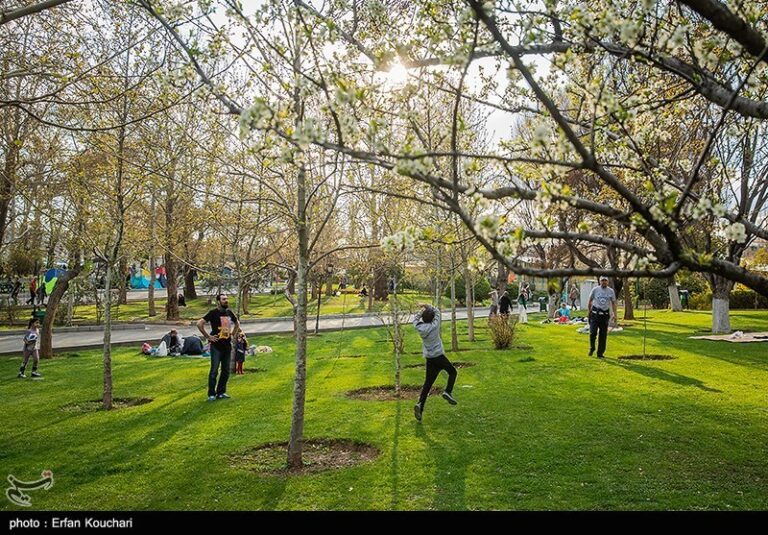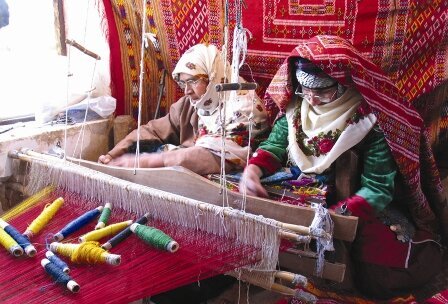Discover the Beauty: 17th-Century Iranian Royal Tiles Unveiled at Scottish Museum
Experience the intricate beauty of 17th-century Iranian art as a rare tile panel goes on public display for the first time in two decades. This stunning piece, a remarkable example of Safavid artistry, will be featured in the upcoming exhibition at V&A Dundee in Scotland, highlighting the rich cultural heritage of Iran.
The tile panel, which dates back to the reign of Shah Abbas II (1642–1666), originally adorned the private hammam, or bathhouse, of the now-demolished Haft Dast Palace in Isfahan. This remarkable artwork is made up of 114 individually painted tiles, measuring approximately 4.5 meters wide, and showcases a lush and idealized garden scene framed by a striking blue and yellow border.
Acquired by National Museums Scotland (NMS) in 1899, this exquisite tile panel will be included in the exhibition titled Garden Futures: Designing With Nature, which opens to the public on May 17. This marks the first time the piece has been loaned to another museum after undergoing extensive conservation work by NMS.
James Wylie, the project curator at V&A Dundee, expressed his admiration for the tile panel, calling it a “masterpiece” of Safavid art. He stated, “This extraordinary tile panel from ancient Iran is a stunning embodiment of the garden as a symbol of power, paradise, and cultural identity.” He further added, “We are thrilled to display it at V&A Dundee for the first time in over two decades, following its meticulous conservation by our colleagues at National Museums Scotland.”
The tile panel’s detailed artistry features:
- Blue-painted pomegranates
- Accurately rendered flower species
- Climbing gourds entwined around shade trees
These elements reflect the enduring human desire to shape nature with meaning. Wylie emphasized that this exhibition provides a “once-in-a-generation opportunity” to experience a masterpiece of Safavid art in a new light. It invites visitors to consider how gardens have historically been spaces of imagination, beauty, and political expression.
The conservation work performed on the tile panel was groundbreaking. Conservators meticulously removed overpainting that had been applied over the past century and lightened the weight of its mounting frame. These efforts enabled safe transportation and display of this rare artwork.
Dr. Friederike Voigt, the principal curator of West, South, and Southeast Asian collections at NMS, highlighted the uniqueness of the tile panel. She remarked, “Beautifully painted and rich in symbolism, it offers a tantalizing glimpse into the splendor of the gardens at the Haft Dast Palace.” Voigt expressed her delight that this stunning piece is going on display for the first time in a generation as part of this major exhibition.
The Garden Futures: Designing With Nature exhibition aims to take visitors on an illuminating journey through significant moments in garden design history, spanning from the 20th century to the present day. It also explores future visions of gardens and their essential role in human culture.
This exhibition is not just about the tile panel; it encapsulates a broader narrative about the importance of gardens in various cultures. Gardens have often served as places of refuge, inspiration, and expression. In ancient Iran, gardens were particularly significant, symbolizing paradise on earth and reflecting the values of the society that created them.
In conclusion, the opportunity to view this rare 17th-century tile panel is a testament to the enduring beauty and significance of Iranian art and culture. As visitors attend the Garden Futures: Designing With Nature exhibition, they will not only marvel at the intricate artistry of the tile panel but also gain insights into the historical context and cultural narratives that gardens represent.
Whether you are an art enthusiast, a history buff, or simply someone who appreciates beauty in various forms, this exhibition promises to provide a rich and rewarding experience. Make sure to mark your calendar for May 17 and immerse yourself in the enchanting world of Safavid art and garden design.






